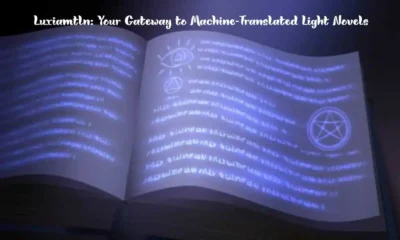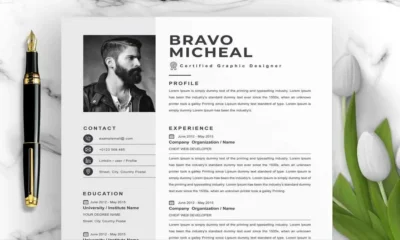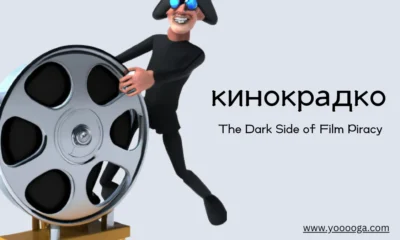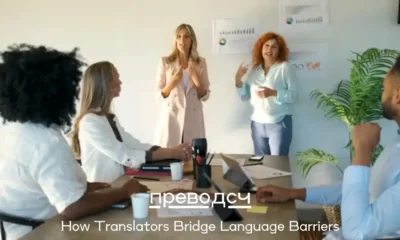GENERAL
How Virtual Chemistry Experiments Makes it Fun and Engaging for Students
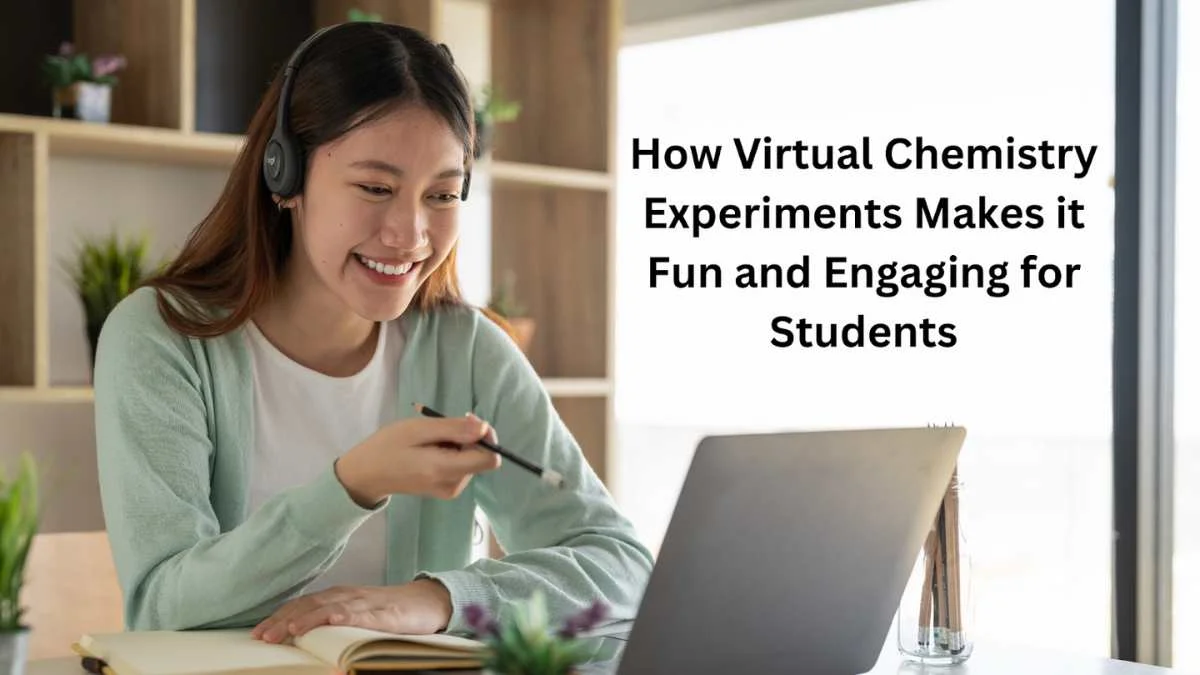
Everything around us revolves around chemistry. Learning chemistry at many educational institutions proves challenging to numerous students. Research experiments conducted in laboratories create an enjoyable experience but demand expensive equipment, take significant time to complete, and create the risk of harm to participants.
Educational technology lets students conduct chemical tests by observing reaction outcomes in real-time from their computers or tablets, along with virtual classrooms. Studies have shown that virtual realities in chemistry classrooms provide learners with better comprehension of chemical concepts while maintaining their interest level.
Online Chemistry Tutoring: The Future of Learning Using Technology
In this modern age, students have more options than ever for learning chemistry with the advent of online education. The availability of online chemistry tutoring is one of the most significant benefits of technology in education. It also provides the students with a way to receive individualized assistance from expert tutors, all from the comfort of their homes.
These tutors use interactive tools, videos, and simulations to simplify complex concepts. Through online chemistry tutoring, learners have the unique opportunity to explore these virtual experiments under the guidance of expert tutors, enhancing their learning experience and fostering a deeper appreciation for the subject.
Multiple online platforms also have virtual laboratories wherein students can do chemistry experiments without worrying about the associated risks to safety. It makes learning chemistry interactive and lets students build confidence that they will understand what they are doing.
Virtual Experiments, Making Chemistry Fun
Why don’t students find chemistry more difficult? A solution by virtual experiments offers an elementary visual representation of chemical reactions to students. Rather than reading about acids and bases, students can observe the interactions and color changes. This makes it fun to learn new things and will make it easier to comprehend.
Virtual labs enable students to conduct various experiments without the risk of error. In a real lab, breaking a test tube or mixing the wrong chemicals can be hazardous. However, in a virtual lab, students can wander freely and learn from their mistakes without any harm.
They can do each part of the experiment as many times as they like, which helps them solidify their understanding. If students are comfortable experimenting with their knowledge, then they become competent in their skills.
Accessible: Chemistry Learning Anytime, Anywhere
A fully equipped chemistry lab is not present in every school. Others, though, may not have the budget to buy lab equipment, and some schools don’t have enough time for hands-on experiments in the curriculum. Virtual chemistry experiments solve this by making it accessible for everyone to be able to learn. At home, the library, or the bus, anywhere you can experiment.
This flexibility enables students to study at their own speed. If a concept is confusing, they can pause, rewind, or repeat an experiment until it clicks. This is particularly useful for students who may require additional practice or wish to delve into advanced topics outside the classroom. Online resources allow all students, near and far, to experience the excitement chemistry can offer.
Tickling the Imagination and Curiosity
Virtual chemistry experiments can be great at getting students to ask questions and explore new ideas. In a conventional laboratory, experiments are usually restricted by resources and time. But in a virtual lab, students can experiment with various things that happen, try changing the variables, and see what the reactions are.
Encouraging curiosity helps to increase student engagement. They get to learn things themselves through virtual experiments instead of just following commands. That very tactile experience makes chemistry more fun and builds students’ lifetime problem-solving skills to help them in other subjects and the real world.
Making Chemistry Less Scary to Learn
Students tend to find chemistry intimidating due to its formulas, equations, technical terms, etc. Traditional labs are compounding the same stress, particularly as students fret about errors. Virtual chemistry experiments remove this apprehension and create a space for learning and training.
Virtual learning allows the pupils to get the gentle nip of an idea without feeling cramped. If they mess up, they just hit reset, no harm, no foul. This helps foster confidence and alleviates some of the anxiety that can accompany learning chemistry. When students feel confident enough to explore, they tend to have fun with the subject material and retain motivation.
Links to the Real World: Examples of Chemistry in Daily Life
Chemistry is not only something students study in school, but it is a part of daily life. An example of these virtual chemistry experiments is allowing students to visualize the real-world applications and implications of what they are learning. In cooking, they can discover how and why chemical reactions take place, how cleaning agents have an effect, or how certain substances respond to heat and cold.
When students learn how chemistry relates to their daily lives, they become intrigued with it.” Virtual experiments enable them to observe that chemistry is relevant and learn why it matters beyond the classroom. This is useful for them to have a growing appreciation for science and its contribution to the world.
Engaging Group Learning Through Virtual Chemistry
Learning chemistry requires neither sole nor solitary activity. Virtual chemistry programs offer multiple environments for students to collaborate with others during their online laboratory work. Students build teamwork abilities through this arrangement and develop their communication skills similar to a conventional laboratory experience.
Virtual collaborative experiments provide students with an opportunity to exchange ideas together as they review results while jointly solving problems. The learning environment gains more engagement and entertainment through this method.
The collaborative work in groups allows students to acquire different viewpoints that collectively boost their comprehension of chemical concepts.
How To Keep Tabs on the Future of Science Education
The advancement of technology will make virtual chemistry experiments increasingly more effective. New technologies including virtual reality (VR) and augmented reality (AR), transform educational experiences by giving students an engaging new method to learn chemistry.
The existing technologies demonstrate the potential to improve chemistry education beyond what was thought possible. Some educational institutions, along with their teaching staff recognize virtual learning advantages thus integrating it into their educational methods.
The accessibility of these technological tools by students keeps the future of chemistry education more clear than ever before.
Virtual Chemistry Learning: A Long-Term Investment
These virtual chemistry experiments do more than make learning fun. They enable students to acquire valuable skills such as critical thinking, problem-solving, and creativity. These skills are valuable in “any” career and not just the sciences.
Virtual experiments also make chemistry more appealing, inspiring more students to take the path to a STEM (science, technology, engineering, and math) career. The more that students enjoy learning chemistry, the more likely students are to consider possibilities in scientific fields.
Conclusion
Here is the third Post on where Students now Learn through virtual chemistry experiments. They make chemistry fun, interactive, and approachable for everyone. Virtual labs eliminate the barriers of cost, safety risks, and limited resources, allowing students to explore and experiment in fear-free environments.
This makes them understand chemistry better and develops their confidence and curiosity. Virtual reality with advancements in technology will become even more realistic and interactive in terms of chemistry. These tools support students in connecting chemistry to the real world, collaborating with others, and developing skills they’ll use beyond today.
FAQs
- Can virtual chemistry experiments replace real lab experiments?
Virtual experiments are useful as learning tools, but real lab experiments are important for hands-on experience.
- What is safe for all ages who are not in a secure research lab?
Yes, they are safe as they negate risks like spills or accidents, and they are perfect for students of all age groups.
- What special gear do students need to do chemistry experiments digitally?
No, most virtual experiments need an internet-enabled computer, tablet, or smartphone.
-

 GENERAL2 months ago
GENERAL2 months agoUncovering the World of кинокрадко: The Dark Side of Film Piracy
-

 GENERAL1 month ago
GENERAL1 month agoUnveiling the Art of преводсч: How Translators Bridge Language Barriers
-

 YOGA1 year ago
YOGA1 year ago4 Person Yoga Poses for Beginners
-

 GENERAL3 weeks ago
GENERAL3 weeks agoChristofle – For Those Who Dream of Family Heirloom Silver

